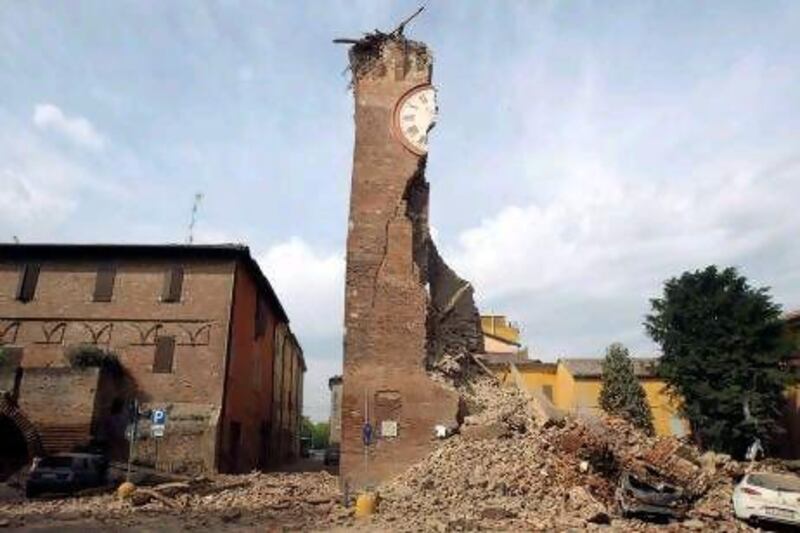SAN CARLO, Italy // Thousands of residents in towns around the north-east Italian city of Ferrara wandered in a daze yesterday amid the stench of gas leaks as aftershocks hit the region after a deadly earthquake.
"I felt the house dancing around. It was chaos. We ran in all directions," said Claudio Bignami, 68, a retired electrician in the town of San Carlo.
"The furniture all fell over. There was broken glass everywhere," said Mr Bignami, as he stared out of his store at a collapsing restaurant in front.
"We're all trying to help each other out now," he said.
Small aftershocks continued to sow panic in the sparsely populated farmlands, industrial parks and small towns around the historic city of Ferrara even after the main 6.0-magnitude shock in the early hours of the morning that left at least six dead.
About 3,000 people were evacuated from their homes in region, after a fresh 5.1 magnitude quake struck yesterday afternoon.
In Ferrara, cracks were visible in the roads and chimneys and roof tiles littered the streets. At a nearby ceramic factory where two employees died, the crashing sounds of falling crates of tiles could still be heard long after the quake.
Alda Bregoli, 73, was still in her nightshirt with a woollen jumper thrown on top standing under an umbrella in the rain.
"I had to run out as quickly as possible. I didn't have time to put anything on. The firemen told me I can't go back in. I'm scared," she said.
Out of habit, many residents crowded around shuttered bars where they would usually go on a Sunday and looked for emergency workers, asking them to inspect the damage in their homes and worried about where they could stay the night.
Local business owners began calculating the extent of the damage.
The earthquake left many of the region's modern two-storey homes intact but older buildings, ancient churches and belltowers which dot the flatlands were badly hit — some collapsed, others had gaping cracks.
The centre of Ferrara is classified as a Unesco World Heritage site.
A local chapel in San Carlo, the 16th-century Ghisilieri Oratorium, which had just been reopened after an eight-year restoration, lay in ruins.
"We'll never be able to rebuild it," sighed Claudio Fabbri, 37, an architect from Modena who has been working on the project and who rushed to the scene in the early hours after a local resident told him what had happened.
Statues of angels in the chapel's apse stared into the open sky after the roof and most of the walls caved in. Mr Fabbri said his only hope was to save a precious painting above the altar now exposed to the elements.
"It was a very rich church. During the restoration we uncovered a 16th-century fresco in the ceiling. It even has the relics of a pope."
* Associated Press and Agence-France Presse






